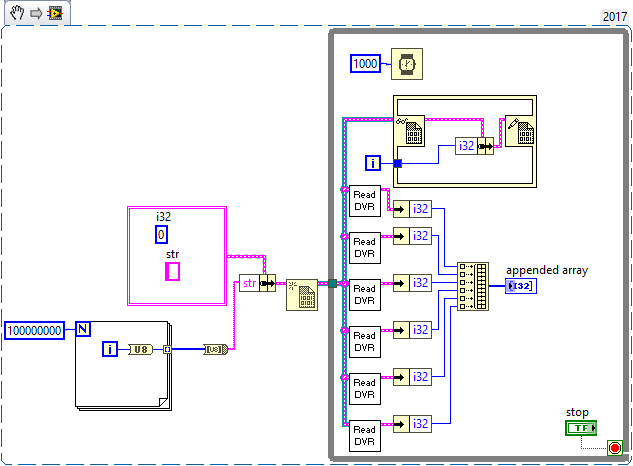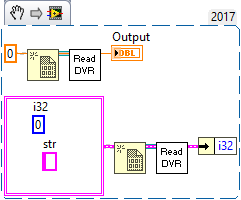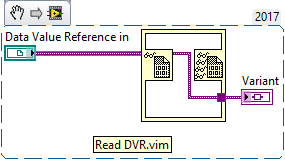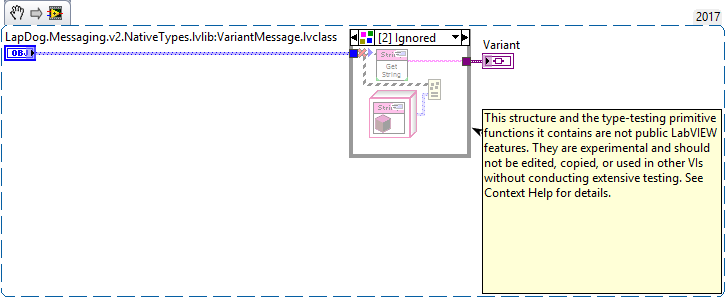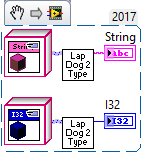
infinitenothing
Members-
Posts
372 -
Joined
-
Last visited
-
Days Won
16
Content Type
Profiles
Forums
Downloads
Gallery
Everything posted by infinitenothing
-
How many service requests this year?
infinitenothing replied to infinitenothing's topic in LAVA Lounge
We all have those. This is one reason why people are afraid of xcontrols. I think there's some code base that everyone's afraid to touch: https://forums.ni.com/t5/LabVIEW/XControl-quot-Data-Change-quot-Event-only-fires-when-different/td-p/418552/page/2 -
How many service requests this year?
infinitenothing replied to infinitenothing's topic in LAVA Lounge
See, whenever I have a bug in my code where "it works on my machine" I just build a debug version of the executable, transfer it to the computer in question, set some breakpoints and discover that there's some unexpected combination of things that I never accounted for. It's then usually just a matter of putting in a retry or upstream validation and the bug is solved. I really wish the AEs could do something like that. I feel like it would solve 70% of my problems in 20% of the time. I feel like the other method of making random modifications to my code so the bug magically goes away really does us both a disservice because the bug is going to come back for no reason for both me and a few other customers. -
I've been a little more active in filing service requests this year. I have: 3 open 1 RMA 3 CARs 12 created in the last 12 months Thanks NI for giving me a resource to help me through the tough spots. I'm never leaving SSP if I can avoid it. Thanks everyone else for all the CARs you generate before I have to generate my own reproduce case.
-
Are you using async VIs? I find it unlikely you have some refnums getting autocleaned unless you do. You have a case where the com works and one where it doesn't. Try and figure out what intermediary step breaks the functionality. Can you read one byte at a time until you get the termination character? Maybe someone with more telnet experience can weigh in. I'm not clear why you wouldn't be getting an error. In debugging you have to check everything (error codes, refnum IDs, counters of how often a given subVI runs, etc) to see the smoke to tell you where the fire is. You might have to modify VIs you received from outside sources.
-
Adding values to Enum resets all instances to default
infinitenothing replied to A Scottish moose's topic in LabVIEW General
I hate the silent mutation. I wrote this idea a while back: https://forums.ni.com/t5/LabVIEW-Idea-Exchange/Deleting-an-enum-element-from-a-type-def-should-cause-a-broken/idi-p/1763158 I'm curious what actions specifically default the value. What version are you using? 2014 helped but I know there's still some mutation going on with the case structures now. -
Has anyone seen Network stream socket error -1967390704? I see this error every now and then on various computers. LabVIEW hangs in the task bar and I have to for quit and then I have to restart the NI PSP service and everything is OK. I have a service ticket open but we're sort of running out of ideas for how to reproduce the problem or on what data we can gather when I see this error.
-
I've always used Zebra designer to convert my logos to ZPL.
-
I keep coming to computers and I guess the user didn't approve the exception or something because they're getting an error 56 when the app opens a TCP connection. I'm looking for ways to avoid this. Some ideas: Autoapprove the exception as part of installation Is there a way to keep prompting them until they approve the exception or close the app Maybe a command line I can send them if they say they are seeing error 56?
-
DereferenceByName Xnode ( -> operator in C)
infinitenothing replied to UnlikelyNomad's topic in Code In-Development
It works with debug on too. If I try and probe, I see a memory increase and UI slowness. -
DereferenceByName Xnode ( -> operator in C)
infinitenothing replied to UnlikelyNomad's topic in Code In-Development
FYI, I just ran a quick experiment (see code below). Watching profiler and task manager, it appears the compiler is smart enough not to copy the string. -
DereferenceByName Xnode ( -> operator in C)
infinitenothing replied to UnlikelyNomad's topic in Code In-Development
-
Direct access to camera memory
infinitenothing replied to RayR's topic in Machine Vision and Imaging
GigE=125MB/s. Out of curiousity is there a reason you don't want to use IMAQdx? I've never used activeX/dotNet for image acquisition. -
How do you organize your custom error code files?
infinitenothing replied to A Scottish moose's topic in LabVIEW General
Can I submit range requests? Your group can do what IANA does for IP ports. Also, I use the "Custom Error Code" feature of the error ring which uses the <ERR> tag which removes the need to distribute the XML error file with the executable and allows for descriptions that can help you debug "There's no case for an input of %d"- 11 replies
-
- errors
- custom error codes
-
(and 1 more)
Tagged with:
-
The original Sony rootkit was on a CD ROM How's that for provenance? I'm having a hard time seeing why usbkill is a concern. Why would an IT policy stop a motivated vandal?
-
FYI, the usb drives use DVD-ROM drivers and are read only.
-
NextLabVIEWStand confirmed!
-
Just Downloaded and Installed LabVIEW NXG.....
infinitenothing replied to smarlow's topic in LAVA Lounge
I'm guessing they are going to handle that by having the option of an HTML UI. There was some hinting of LabVIEW to javascript in prior keynotes. -
Introducing the JKI Flat UI Controls for LabVIEW
infinitenothing replied to Tomi Maila's topic in Announcements
- 3 replies
-
- labview
- user interface
-
(and 3 more)
Tagged with:
-
Check out the example here:C:\Program Files (x86)\National Instruments\LabVIEW 20xx\examples\DAQmx\Analog Output\Voltage - Continuous Output.vi
-
tarcking Object tracking - virtual draw, paint
infinitenothing replied to Nerich34's topic in Machine Vision and Imaging
I just saw this post. That's a VI snippet. You can drag it (might have to save it to disk first?) and drop it onto your block diagram. You'll get all the cases (both true and false). The "pen" false case just has the pink wire wired through (don't make any changes) and the "previous pen" false case looks like the image below As for getting the "mouse status", maybe try acquire input data.vi



